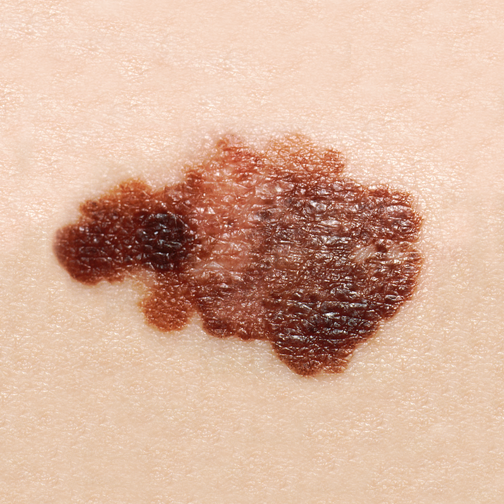By Lisette Hilton – Dermatology Times
What’s more frightful than Halloween? What the makeup and costumes can do to children’s and adult’s skin. Dermatologists weigh in with their top tips to help patients avoid post-Halloween skin horrors.

Tip 1: Test before applying
Elizabeth Tanzi, M.D., founder and director, Capital Laser and Skin Care, and clinical professor of dermatology at the George Washington Medical Center, recommends that patients do a skin test on the neck or forearm to see if a product they plan to put all over their faces and even their bodies will cause an aller
“Halloween makeup is notorious for containing irritating dyes and chemicals, so be very careful about what you use. Also, some of these products come from China where lead has been an issue, so as a parent, I would think twice about applying inexpensive Halloween makeup to large areas on children,†Dr. Tanzi says. “The best bet is to find professional theater makeup, if an elaborate face painting job is required, for the costume. It’s more expensive, but at least the likelihood of irritation or toxicity is decreased.â€
Tip 2: Unclogging what’s clogged
S. Manjula Jegasothy, M.D. founder of the Miami Skin Institute and clinical associate professor of dermatology, University of Miami Miller School of Medicine, Miami. Fla., says Halloween parties can result in long exposures to costume makeup paste and gels.
“These can cause clogging of the pores and [acne] eruptions. These issues are best treated with OTC salicylic acid cleansers and spot treatments, or benzoyl peroxide spot treatments,†Dr. Jegasothy says.
Dermatologists should let their patients know that they should make appointments to address skin issues that persist for more than a week after costume-makeup application.
Tip 4: Costume dangers
Halloween costumes can be allergies waiting to happen, Dr. Prystowsky says.
“Keep latex allergies in mind as well for masks, prosthetics and other accessories. If your patients plan to reuse old clothes that have been sitting in their attic, you may want to suggest they give them a heavy clean. Dust and mites can cause allergic reactions if the clothes aren’t carefully cleaned,†Dr. Prystowsky said. “Storing clothes in suboptimal conditions could also expose them to mold. Many costumes have metal pieces, like buttons, crowns, jewelry or shields. Tell your patients to make sure these pieces don’t contain nickel.â€
Julia Tzu, M.D., of Wall Street Dermatology in Manhattan, New York City, said she recommends patients wear looser, well aerated costumes to avoid skin issues.
According to Dr. Tzu, 100% cotton fabric is gentlest on the skin.
Tip 5: Where not to buy makeup
Suggest your patients avoid buying their Halloween makeup from the dollar store type retailers or Halloween pop-up shops, according to Jessica J. Krant, M.D., M.P.H., a New York City-based dermatologist surgeon.
“Most of this makeup is poorly regulated and often sells only once per year, so some of it may be pretty old. Since it is not well regulated, it may not contain quality preservatives that are meant to prevent bacterial buildup, increasing the risk for infections,†Dr. Krant says.
Tip 6: Take it off… as soon as possible
Dermatologists should recommend their patients remove all Halloween makeup before going to bed, according to Dallas, Texas, dermatologist Kristel Polder, M.D.
“… thicker foundations can clog pores and contribute to acne,†Dr. Polder says.
She also tells patients to rinse off body paint or sprays with gentle soap and water to avoid irritating the skin and to apply a mild hydrocortisone cream immediately after removing anything that itches or burns.
Tip 7: Accessory hazards
Certain mainstays of Halloween costumes can be particularly hazardous to the skin, according to dermatologist and cosmetic surgeon Joel Schlessinger, M.D., A few examples: the red dye in a petroleum base in fake blood can wreak havoc on the skin. Patients can try, instead, to make their own blood look-alike with corn syrup, flour and food coloring, according to Dr. Schlessinger, who is president of LovelySkin.com.
“Certain false nails are more harmful than others. The chemicals used to apply acrylic nails, for example, include resins and formaldehyde, which are known to cause cancer. Over time, these chemicals can also damage the nail matrix, causing the entire nail to fall off,†Dr. Schlessinger wrote in a recent blog. “Glue-on nails pose less of a threat to your nail health, as long as you remove them properly. However, these are still hard on your natural nail and not recommended. It’s better to paint your nails with regular nail polish.â€
Los Angeles-based dermatologist Tsippora Shainhouse, M.D., clinical instructor of pediatric dermatology at the University of Southern California, says that, while fake eyelashes can make a costume a pop, eyelash glues (especially cheap ones) can cause severe contact dermatitis.
“Even reputable brands contain potential contact allergens, such as formaldehyde, cyanoacrylates, latex and rosins,†Dr. Shainhouse says.
She recommends patients test patch the adhesive on their inner arm before applying the lashes to eyes.
Other tips: be careful the glue does not drip beyond the edge of the false lash strip, and keep in mind that tape strips on fake moustaches, sideburns and beards can cause a contact dermatitis. Patients should consider wearing wigs and strap-on beards with elastic ties, according to Shainhouse.




Recent Comments